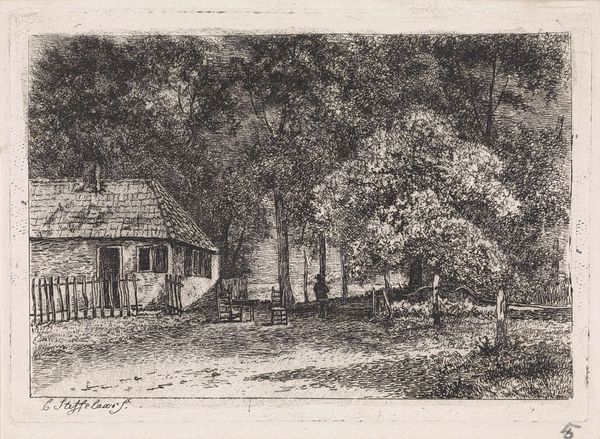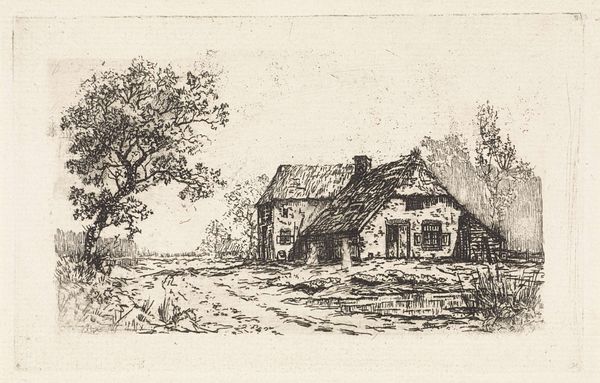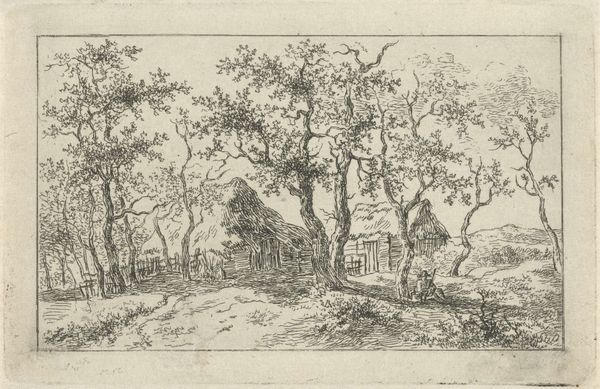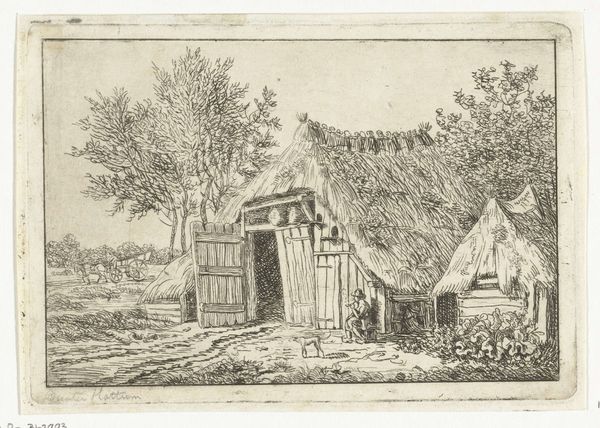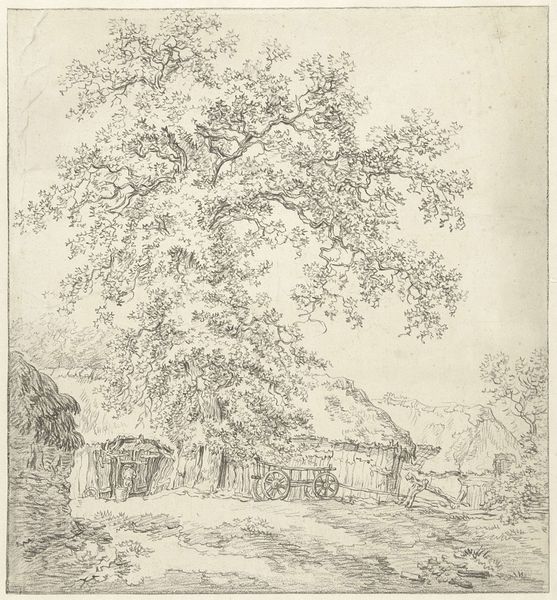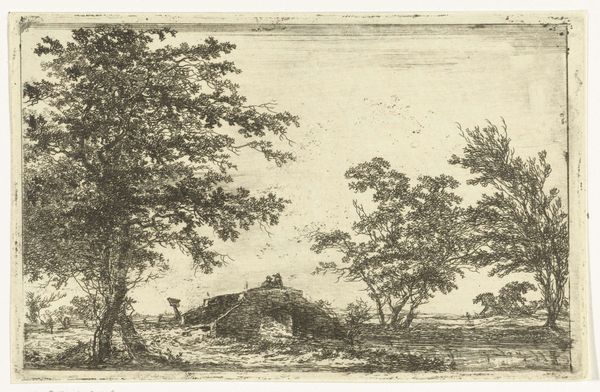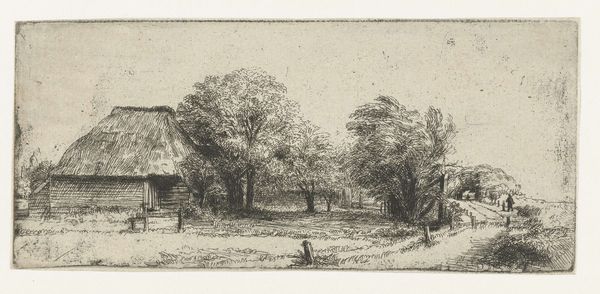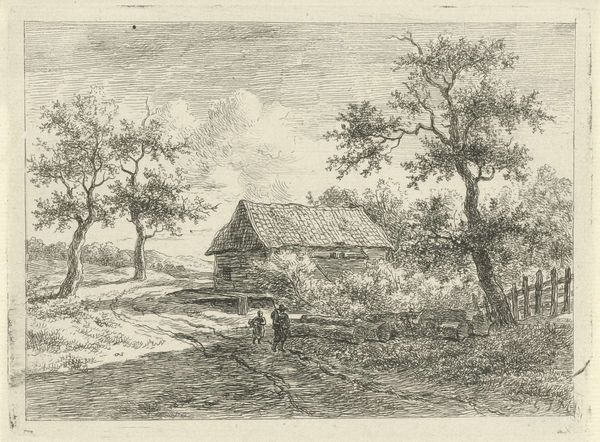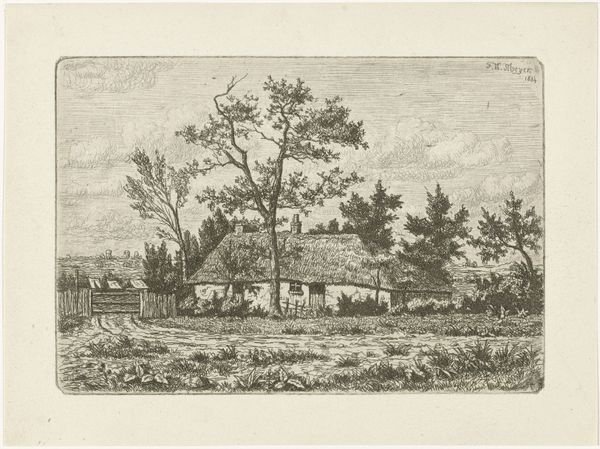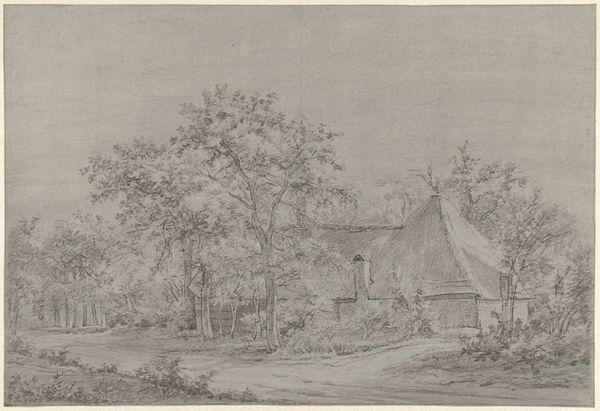
drawing, etching, ink
#
drawing
#
pen sketch
#
etching
#
pencil sketch
#
landscape
#
ink
#
realism
Dimensions: height 134 mm, width 226 mm
Copyright: Rijks Museum: Open Domain
Curator: Looking at Jan van Lokhorst's "Boerderij," a detailed landscape etching from the mid-19th century, what jumps out at you? Editor: Immediately, it feels like peering into someone’s memory, or a dreamscape faintly recalled. It's monochromatic, like a faded photograph, evoking a sort of quiet melancholy. Curator: That's interesting. The texture is remarkable given its medium. Van Lokhorst uses a combination of etching and ink to render this rural scene, focusing on the detailed textures of the thatched roof and weathered wooden structures. His representation resonates with the social realities of 19th-century rural life, highlighting a romanticized vision of peasantry. Editor: Yes, you can almost smell the damp earth and hear the rustling of leaves. It's idyllic in its simplicity but the dilapidated state of the house is striking, as if to convey something about resilience amid hard times. It's more than a pretty picture, you know? Curator: Absolutely. By situating this artwork in its historical and cultural setting, we see beyond pastoral beauty. Van Lokhorst perhaps uses this setting to talk about land ownership, or rather the lack thereof, within agricultural communities, echoing larger debates about social class and inequality. Editor: I hadn't thought of that directly, but that reading lends a real gravity to what at first seems like just another landscape piece. The placement of the tiny figures is thoughtful, really makes you ponder on humanity's place within the natural world. It is as though they have merged into one. Curator: These depictions tie into the romantic idealization of rural folk. But at the same time, they raise issues concerning labor exploitation and marginalization, thus bridging themes within realism and landscape painting. It prompts us to critically examine social representations, offering dialogue concerning both progress and oppression. Editor: Thinking of it like that, this piece holds a certain tension—a dance between romanticism and realism, a reflection on life's beautiful hardship. A bit like looking at the past and suddenly seeing the future hidden in the background. Curator: Indeed. Van Lokhorst gives us more than a landscape; he gives us an insight into the dialogues and social commentary prevalent in art. It calls on critical engagements with histories as we analyze present landscapes. Editor: So simple, and yet it leaves me feeling richer, somehow. It really makes one stop and feel thankful to be a part of the conversation.
Comments
No comments
Be the first to comment and join the conversation on the ultimate creative platform.
